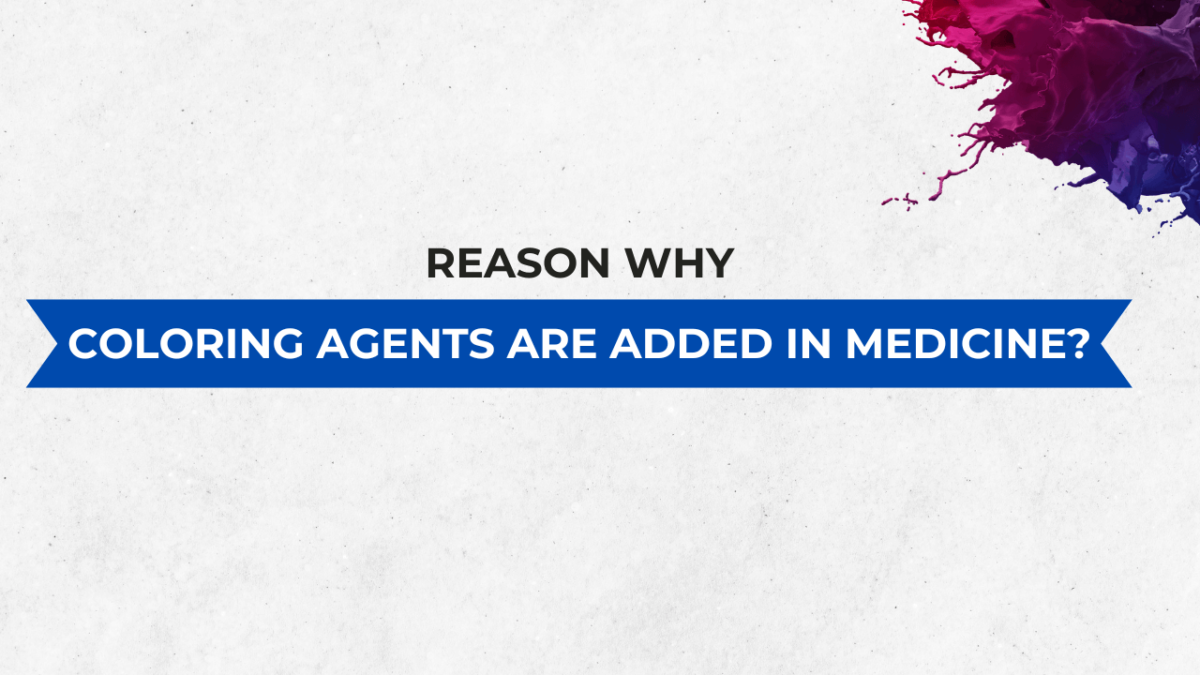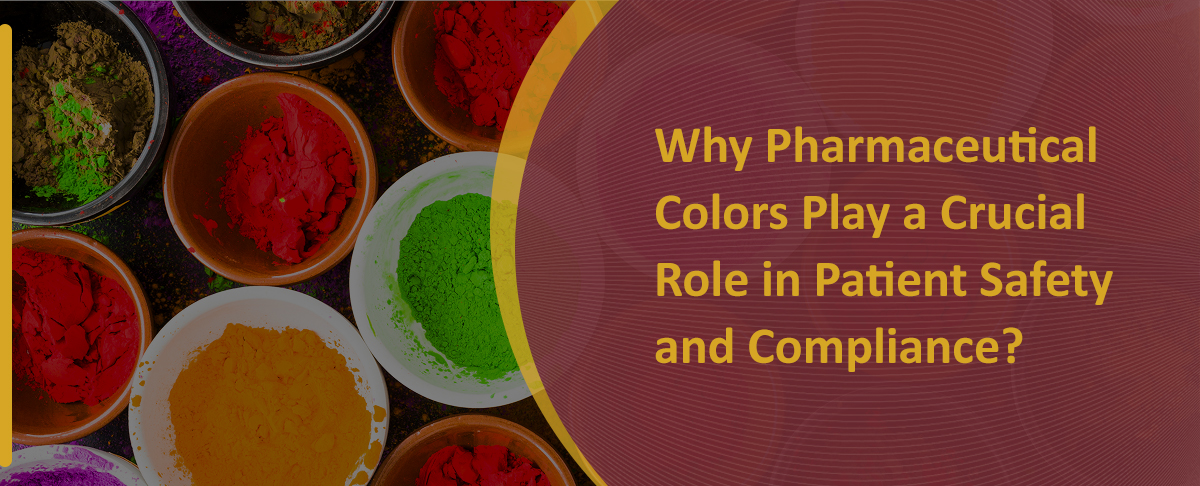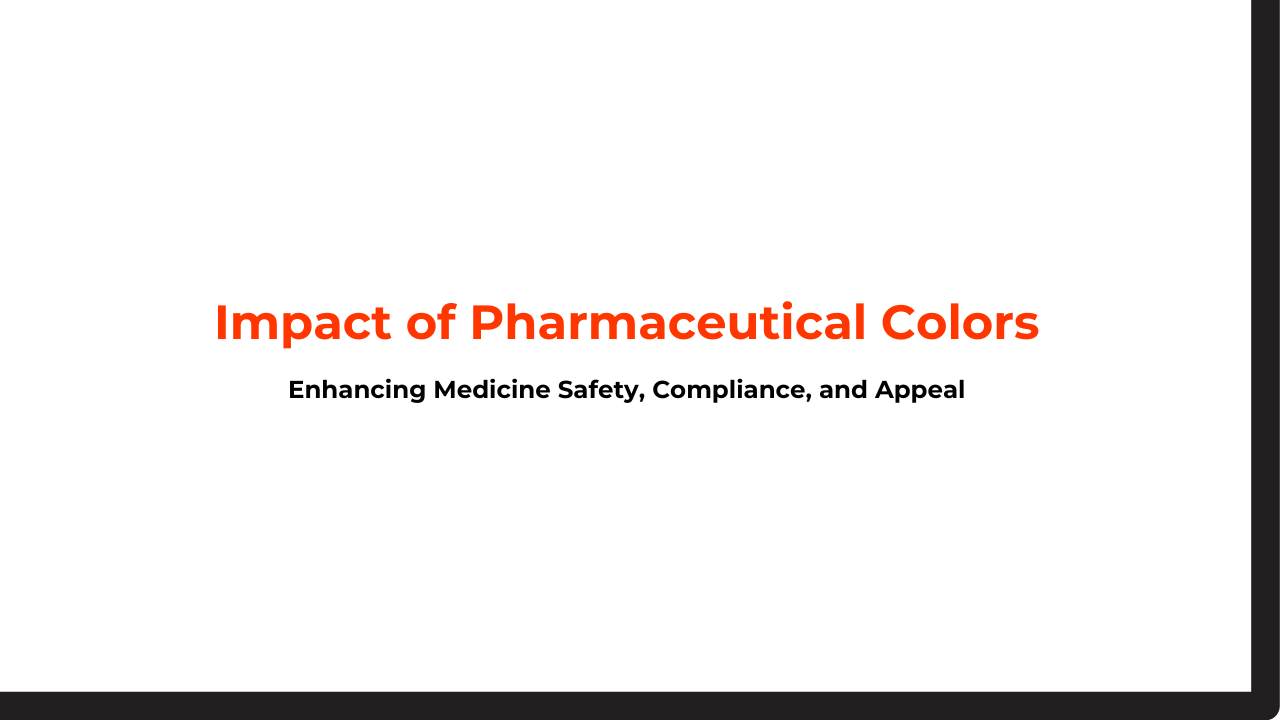Pharmaceutics is one of the most important industries; each component is chosen with keen attention to detail. Pharmaceutical industries must follow color-coding guidelines for medicines to ensure safety and drug efficacy. In this blog post, you will learn why coloring agents are added to drugs and how they are becoming more popular in the pharmaceutical industry.
Government authorities have issued some guidelines to combat drug counterfeiting and the use of harmful colors. Blue, green, red, white, and brown are some of the most commonly used coloring agents in pharmaceuticals that are popular worldwide. Synthetic and natural ingredients are used to create these colors.
A lot of considerations need to be taken into account when it comes to pharmaceutical color measurement because drugs require color formulation. It has been proven that colors have psychological effects that help accelerate the healing process. Moreover, in pediatrics, color is often combined with flavor to make ingesting drugs easier.
In such cases, the appearance of the food has a natural relationship with the taste. Pharmaceutical dyes must be applied with a great deal of consistency, which is accomplished through color measurement and control. If you are wondering what pharmaceutical colors are and why colors or coloring agents are added to medicines, continue reading this blog.
What are coloring agents?
Many industries use colorants, including food & beverage, pharmaceuticals, paint and clothing, plastics, photographs, prints, ceramics, and more. Today, colorants are being used in innovative applications termed functional technology, enhancing the appearance and feel of a product and specific functions, such as surgery.
Colorants can be dyes or pigments, and both are used for various industrial applications. Color is added to textiles by adding dyes that are organic or inorganic compounds soluble in water. Pigments act as a bonding agent for the polymer molecules that make up the textile fibers in paints, printing inks, ceramics, and plastics.
Pigments are widely used in various pharmaceutical dosage forms. Furthermore, an appropriate dispersion is applied to a suitable medium. The pigment is normally composed of organic compounds.
Read More: Lake Colors vs Pigments
Why are coloring agents added to medicines?
Medicinal pills were typically round and white from ancient Egyptian times until the turn of the 20th century. Pasty pastel or ghostly white hues were all you could find for over-the-counter medications, and prescription medications could only be found in transparent vials in the past.
Nowadays, medicines come in different colors, and even liquid medication is available. This raises the question of whether color plays a significant role in the pharmaceutical industry. The color of the pill might be attractive to the eye, but it has several other benefits and is now an essential part of the medication used worldwide.
Pharma companies and consumers benefit from these colors when it comes to pharmaceutical products. Color serves in various ways, but the significant function of color is to help customers distinguish between prescription drugs and non-prescription drugs and between different kinds of capsules or tablets.
All pills’ exact size, color, and shape can confuse elderly patients. Colorants are often added to the following pharmaceutical preparations:
- Capsules such as Capsule Shells or Coated Beads
- Tablets such as core or coating
- Topical creams
- Oral liquids
- Ointments
- Salves
In addition, brightly colored medicines improve the mood and health of those suffering from long periods, regardless of whether the colorful objects are pills. The more onomatopoeic the colors and color combinations are, the lower they can improve the risk of making medical errors.
The color of the medication can also affect patient outcomes, as blue means deep sleep at night, and red means swift recovery from any state of illness. Since the 1300s, butter has been yellow, as it is believed humans eat with their eyes and palates.
When swallowed, the pill leaves behind a taste, making it difficult to eat. Therefore, we are more likely to associate it with a positive coalition by associating it with color.
Importance of adding colors to medicines
- Patients benefit from colorful medicines psychologically and can recuperate more quickly.
- Colors help in the easy identification of the drugs and in following the prescription correctly.
- Identifying counterfeit drugs becomes much easier by using the right color-coding
- Different drug colors, shapes, and sizes reduce the risks of counterfeiting.
- Improve brand identification.
The color of the pills is now widely used to create brand images rather than simple white pills, aside from providing functional benefits for customers. Pharmaceutical companies now consider colors a powerhouse. As a result, they are conducting thorough chemistry research and developing pharmaceutical dyes accordingly.
Today, most consumers buy over-the-counter drugs instead of prescription drugs, so manufacturers are adding more colors to their drugs. Customers also recognize trusted brands by these colors since they appeal to them.
Color might not be a significant factor as long as the medication is administered, if there is a prolonged illness, and microdispensers might be implanted in the bodies of people who struggle with long-term illness. Like Viagra, where the blue shade of the drug doesn’t mean its effect, other times, the color of the drug does not indicate how effective it is.
With this dispenser, it will be possible to get the required quality of drugs by testing the quantity of drugs present in your body. As a result, color is now a mark of the drug’s personality, communicating how it might make the person feel when they consume it and marking the pharmaceutical firm producing it.
It also indicates the benefits of belonging to a reputable brand and what makes it difficult for others to copy this combination. There are various reasons why colorants are used in different pharmaceutical dosage forms, including:
- Distinctive appearance is intended to help easily identify a specific formulation, thereby reducing dispensing/medication errors.
- The opacity in the formulation protects light-sensitive active materials, thereby prolonging stability.
- The objective is to get patients to accept medications more readily, especially in children.
- Cosmetics are sometimes called cosmetics for pharmaceutical preparations since they enhance the aesthetic appearance.
Conclusion
Therefore, pharmaceutical dosage forms are often colored to give them an appealing look and feel. Different tablets, coating tablets, ointments, gels, liquid orals, toothpaste, salves, and capsules, such as rigid and soft gelatin, are all types of pharmaceutical formulations that need to be colored.
In addition, if you need further information about pharmaceutical colors and their uses and applications, contact a leading chemical company specializing in manufacturing and supplying a wide range of high-quality pharmaceutical colors at affordable prices.




